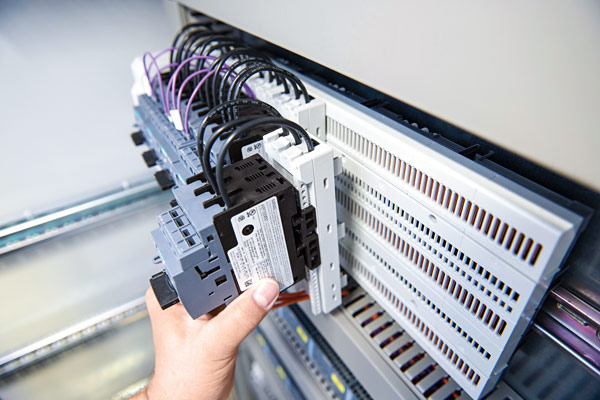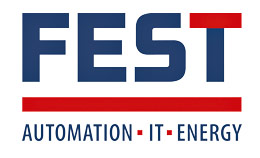Text Dr. Jörg Lantzsch, Hans-Robert Koch ––– Photography
Large control and switchgear systems have a great many tasks, one of which is supplying power to smaller consumers. Before they can do so, however, each individual component needs to be wired up – a huge amount of work. “Even though comb bridges that wire several components in parallel simplify the wiring process, a great deal of work is still required,” says FEST GmbH Project Manager Sven Rottgardt. Separate busbar systems to supply the auxiliary consumers are a further option for the solution provider from Goslar in Germany, which plans and develops industrial plant engineering operations. Even then, a considerable amount of work is still involved, because additional holders and covers need to be installed.
50 PER CENT LESS WORKING TIME
It doesn’t have to be that way, though, as demonstrated by a current project in which FEST GmbH has adopted a different approach to designing the auxiliary drives in a switchgear system for a metalworking plant. Power is supplied both to the main drives that mill and straighten the round stock processed at the plant, and to the drives that move the metal components – which weigh several tonnes – within the plant. In all, 20 fields with a total rated current of 4,000 A have been installed. However, the plant also includes a number of auxiliary consumers that need to be supplied with power separately.
To meet this particular challenge, Rottgardt and his team decided to use the RiLine Compact power distribution system from Rittal for the first time. The solution offers a whole host of benefits. “Installation is very straightforward and far fewer parts are needed. The crucial factor, however, is that we roughly halve the working time involved,” explains Rottgardt. The numerous steps normally required during conventional installation are no longer necessary.
FAST AND TOOL-FREE
That makes the compact busbar system ideal for supplying power to small consumers. The system is based on a board with integrated conductors and an end-to-end contact pitch pattern. This is simply clicked into place on a DIN support rail in the enclosure. No tools are required for this operation or for plugging components onto the board, which has allround shock-hazard protection. What’s more, this is all it takes to establish the electrical contact for the components. The resulting smaller power distribution systems have a maximum rated current of up to 125 A.
The main benefit of RiLine Compact is its fast, tool-free installation. “Quite simply, it’s the ideal solution for small distribution systems and ultimately makes us even more cost-effective,” emphasises Rottgardt. He then mentions a further advantage: “Time and again, an additional consumer needs to be connected during commissioning. With RiLine Compact, we have space in reserve, so we can integrate this into the existing system quickly and easily.”
SAVINGS ARE THE DECISIVE FACTOR
FEST GmbH always closely scrutinises new products, but when a system is as impressive as RiLine Compact and halves the working time, it makes the decision all the easier. “When it comes to future customer projects, preference goes to new systems such as RiLine Compact that offer impressive practical benefits,” says Holger Lichtenfeld, who is in charge of design engineering and manufacturing at FEST GmbH. “Ultimately, however, the price-performance ratio always has to be right,” he underlines and adds: “With RiLine Compact, that’s very clearly the case.”


